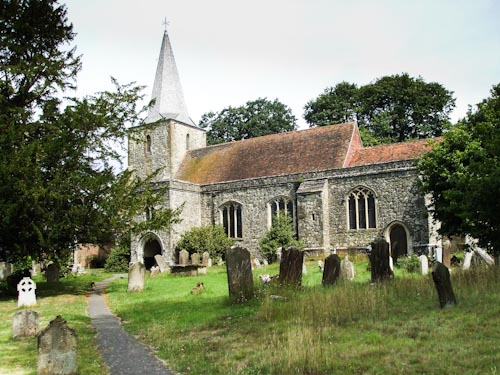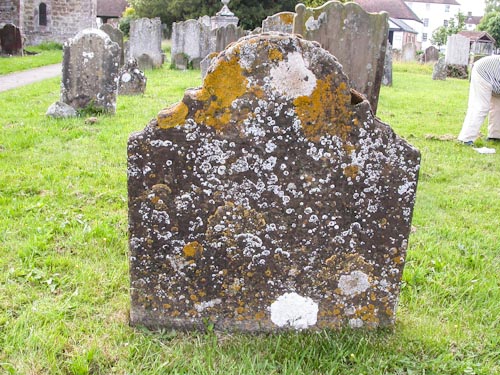In unpolluted churchyards, lichens often form mosaics of colour, especially on the stonework, adding to the character and interest of the site. They vary in form from simple, powdery scatterings and crusts to more elaborate leafy or even bushy structures.
The Importance of churchyards
 |
|
Churchyard habitats

Provided there is sufficient light and moisture, lichens are able to colonise surfaces mostly unsuitable for flowering plants. Some grow very slowly, sometimes less than half a millimetre a year, while others grow more rapidly. Many are long-lived. Individual lichens may well be almost as old as the gravestones upon which they live. The ancient stonework of churches and churchyards, when undisturbed and unpolluted by chemical sprays, thus provides a sanctuary for them. The geology is often varied: limestone, sandstone, ironstone, marble, brick, mortar, slate and granite, each having their distinctive lichen communities. The tombstones, the stone surfaces of the boundary wall and of the church itself vary also from rough to smooth, shaded to exposed, damp to dry, horizontal to vertical, providing a multitude of niches. The lichens on the shaded north side and the sunny south side of the church are, for example, markedly different.
Further micro-habitats are provided by recessed lettering, soil crevices in boundary walls, sills stained with iron and copper, and the granite chippings within a kerbed grave. In addition, lichens are to be found on well-established trees, wooden structures such as seats and fences, grassy areas, pathways and even rubber dustbin lids!
More Information
For further information on churchyard management and the conservation of churchyard lichens visit our churchyard lichen conservation page. You can also download our “Green Leaflet” on Churchyard Lichens and a useful factsheet on churchyard lichens (see links to PDFs at the bottom of this page).
Anyone wishing to get involved in the churchyard lichen survey should start by getting in touch with the Churchyard coordinator, Ivan Pedley, for England, Wales or Northern Ireland, or John Douglass for Scotland It is always a good idea to visit a few churchyards with someone more experienced before setting out on your own. Various resources are available on this website to support the surveys, including spreadsheets to hold the records and a proforma for writing a brief report for the church (see link to Churchyard Lichens Survey: Blank Summary Sheet for Parishes at the bottom of this page).
Churches seeking further information are advised to contact us. We may be able to arrange lichen surveys when needed, and can provide advice on churchyard management. See also our fact sheet, “green leaflet” and attractive wall poster - all of which can be downloaded via the links at the bottom of this page.
If you wish to access more data for churchyards, please make a request to records@britishlichensociety.org.uk for the data you require.